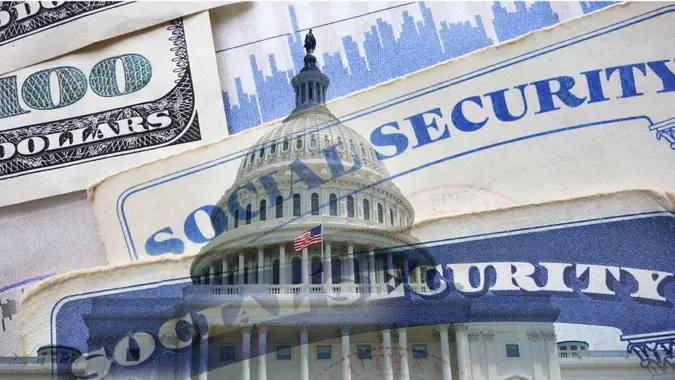Can I Withdraw My 401(k) if I Get Laid Off?

Commitment to Our Readers
GOBankingRates' editorial team is committed to bringing you unbiased reviews and information. We use data-driven methodologies to evaluate financial products and services - our reviews and ratings are not influenced by advertisers. You can read more about our editorial guidelines and our products and services review methodology.

20 Years
Helping You Live Richer

Reviewed
by Experts

Trusted by
Millions of Readers
The good news is that you can withdraw your 401(k) if you get laid off. Since a 401(k) is a tool for retirement savings, the money remains yours even if you no longer have a job. However, you may have to pay taxes and penalties depending on your age and other circumstances.
When Is There a Penalty for Withdrawing From Your 401(k)?
The IRS will charge you an early withdrawal penalty fee if take money out of your 401(k) before you reach the age of 59½ years. That penalty is 10% of the money you take out. For example, if you plan to withdraw $15,000, your penalty is $1,500.00.
Hardship Withdrawals
Some retirement plans let you withdraw money without the 10% penalty if you qualify for a hardship withdrawal.
The definition of a hardship can be different according to each plan. Common expenses that qualify for a hardship withdrawal include:
- Medical expenses
- Funeral expenses
- Payments that prevent eviction or foreclosure
Series of Substantially Equal Periodic Payments (SoSEPP)
If you don’t qualify for a hardship withdrawal, you can use SoSEPP. With these payments, you won’t have to pay the 10% early withdrawal penalty. These are regular payments that you can get based on your life expectancy.
This is a more complicated process to set up. Consider contacting a financial planner to avoid making a mistake that results in a costly penalty.
What Should You Do With Your 401(k) After a Layoff?
You may wonder what you can do with your 401(k) after getting laid off by your employer. Although there is no “one size fits all” rule, there are a few general options that you can consider depending on your financial situation.
1. Do Nothing and Leave Your 401(k) With Your Former Employer
This decreases the hassle of making adjustments. However, you should check the terms of your plan because you might be charged maintenance fees. You may also have to move your money if your account balance is less than $5,000
2. Roll It Into an IRA
This is a good option if you want to keep making contributions before you get a new job. There are multiple types of IRAs to choose from, including traditional IRAs with tax-deductible contributions and Roth IRAs with after-tax contributions.
3. Wait Until You’re Employed Again
Once you have a new job, you can transfer your 401(k) to your new employer’s plan.
4. Withdraw Your Money
This option does come with tax and penalty charges if you don’t meet certain criteria.
Tax Implications of Withdrawing Your 401(k) After a Layoff
Withdrawing your 401(k) funds after a layoff comes with state and federal tax implications because it is funded by money you haven’t paid income tax on yet.
Some states do not tax retirement income, while others do, so checking your state’s rules is essential before withdrawing.
Alternatives to Withdrawing Your 401(k)
If your lay off has left your in a financial pinch, there are other ways to get some cash, including:
- Personal loans
- Credit cards
- Cash advance apps
Although these options don’t have tax implications, you will still have to pay interest on the money you borrow. Make sure you understand the costs before you take out a loan.
Financial Moves to Make in Unemployment
Most employer-sponsored 401(k) plans won’t allow you to make anymore contributions to your plan once you no longer work for the company. You also won’t be able to get a 401(k) loan. If you want to keep making contributions to your account, you’ll need to roll it over into an IRA.
You can also:
- Review the details of your severance package and understand how much liquidity you have in your accounts
- Remove non-essential expenses and create a new budget strategy that lets you keep some funds on the side for retirement
- Pause your contributions to your retirement funds until you find a new job
Long-Term Impact of Withdrawing Your 401(k) After a Layoff
Cashing out your money reduces your retirement savings potential. It makes it more challenging to start over since you have less time and need more money to reach your financial goal.
Unless the money from the 401(k) is your only financial net, financial experts recommend that you don’t touch that money or roll it over to an IRA.
How To Decide What to Do With Your 401(k) After a Layoff
Leaving your 401(k) untouched or rolling over to an IRA can help you maintain your contributions and save you money in early withdrawal penalties.
Since every state and situation differs, consult a financial planning professional before deciding on a course of action. The more information you have, the better prepared you are to deal with any obstacles or hurdles you may encounter when planning to withdraw funds early from your 401(k).
401(k) Withdrawal FAQ
Take a look at some of the answers to frequently asked questions about 401(k) withdrawals. See if any apply to you, especially if you're wondering about what happens if you were to get laid off.- Can I cash out my 401(k) if I get laid off?
- Yes, you can cash out your 401(k) early if you get laid off. However, early withdrawal comes with penalties if you don't meet specific criteria set by the IRS.
- What are the tax penalties for withdrawing my 401(k) early?
- Penalties include the funds being counted as taxable income and a 10% penalty on the total amount of money withdrawn. Some states may impose additional taxes, and different 401(k) plans could have withdrawal restrictions or other fees.
- What happens to my 401(k) if I leave it with my old employer?
- If you leave it with your employer, nothing will happen to your 401(k). However, stay on top of your 401(k) regardless, as laws change frequently or your former employer either goes out of business or becomes acquired by another company. Also, some employer 401(k) plans require a minimum balance on the account, so you may need to decide what to do with those funds if they will not allow you to keep them. You can choose to withdraw or roll them over into another account, the latter of which is going to have the most tax advantages.
- Should I roll over my 401(k) after being laid off?
- Rolling over your 401(k) is an excellent idea after being laid off since your retirement savings stay intact, and you do not have to pay tax penalties.
- How can I access my 401(k) funds without penalties?
- To avoid the 10% early withdrawal penalty on your 401(k), you must meet specific exceptions, such as:
- Reaching age 59½
- Leaving your job in or after the year you turn 55 (Rule of 55)
- Taking substantially equal periodic payments (SEPP/72(t) rule)
- Having a total and permanent disability
- Covering unreimbursed medical expenses exceeding 7.5% of your adjusted gross income
- Facing certain federally declared disasters
- Being a victim of domestic abuse (up to $10,000, starting in 2024)
- Having a terminal illness
- If you're a first-time homebuyer or have higher education exceptions, this doesn't apply to 401(k)s. However, it is permissible with IRAs.
- To avoid the 10% early withdrawal penalty on your 401(k), you must meet specific exceptions, such as:
Our in-house research team and on-site financial experts work together to create content that’s accurate, impartial, and up to date. We fact-check every single statistic, quote and fact using trusted primary resources to make sure the information we provide is correct. You can learn more about GOBankingRates’ processes and standards in our editorial policy.
 Written by
Written by  Edited by
Edited by 

























